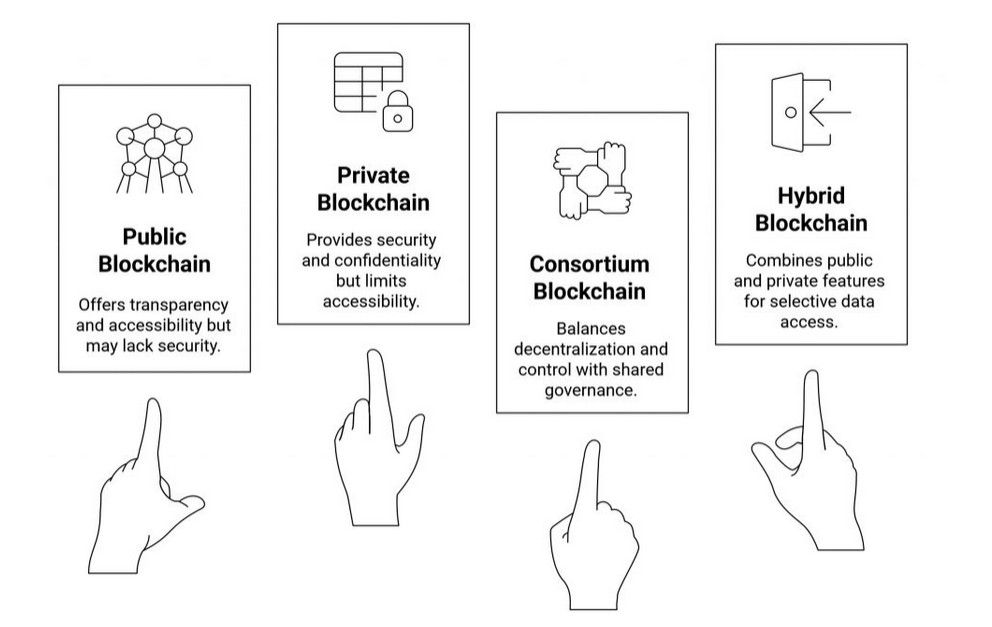Why in the News?
This newscard is an excerpt from the original article published in the PIB Explainers.
About National Blockchain Framework (NBF):
- Launched: September 2024 by the Ministry of Electronics and Information Technology (MeitY) with a ₹64.76 crore budget.
- Objective: Establish a unified, secure, and scalable blockchain architecture for governance and public service delivery.
- Purpose: Promote trust, transparency, and interoperability across digital systems through a permissioned blockchain network deployed at NIC data centres in Bhubaneswar, Pune, and Hyderabad.
- Impact: Enables ministries, regulators, and state governments to develop Blockchain-as-a-Service (BaaS) solutions for faster, tamper-proof, and verifiable transactions.

Core Components of the NBF Ecosystem:
- Vishvasya Blockchain Stack:
- Indigenous modular platform serving as NBF’s backbone.
- Offers Blockchain-as-a-Service, distributed infrastructure, and open APIs for seamless e-Governance integration.
- Ensures permissioned, secure, and scalable operations across departments.
- NBFLite (Blockchain Sandbox):
- A testing environment for startups, academia, and innovators to build and validate blockchain prototypes.
- Preloaded with smart contract templates for governance and supply chain applications.
- Praamaanik:
- A blockchain-based mobile app verification system to authenticate legitimate applications and curb fake or malicious software.
- Enhances digital trust and cybersecurity in app ecosystems.
- National Blockchain Portal:
- A unified digital interface for blockchain adoption across government and industry.
- Acts as a repository of standards, policies, and interoperability guidelines under MeitY’s blockchain strategy.
Applications in India’s Governance:
- Certificate & Document Chain: Digitally secures government-issued documents (e.g., birth, caste, CBSE certificates) to prevent forgery; 34 crore+ verifications completed on blockchain platforms.
- Property Chain: Records and verifies land and property transactions transparently, enabling instant ownership validation; Aims to reduce litigation and expedite land record updates.
- Judiciary Chain: Provides immutable records of judicial data, facilitating e-delivery of notices, bail orders, and summons; 665 judiciary documents verified as of October 2025.
- Inter-Operable Criminal Justice System (ICJS): Links police, prosecution, and judiciary databases on blockchain for seamless evidence and case management; 39,000+ documents verified on the blockchain.
- Logistics Chain (Aushada): Tracks pharmaceutical supply chains in Karnataka from production to hospital delivery, ensuring drug authenticity and quality.
- TRAI’s Blockchain for Telecom: Uses Distributed Ledger Technology (DLT) for tracking SMS transmissions and combating spam; covers 1.13 lakh registered entities.
- RBI’s Digital Rupee Pilot: Demonstrates blockchain-based Central Bank Digital Currency (CBDC) for traceable and real-time retail transactions.
- NSDL’s Blockchain Platform: Introduces Debenture Covenant Monitoring for capital markets, ensuring real-time compliance and investor protection.
- CoE for Blockchain Technology (NIC): Acts as a consulting and training hub for ministries to pilot and scale blockchain applications using open-source systems like Hyperledger Fabric and Ethereum.
| [UPSC 2020] With reference to “Blockchain Technology” consider the following statements: 1. It is a public ledger that everyone can inspect, but which no single user controls. 2. The structure and design of blockchain is such that all the data in it are about cryptocurrency only. 3. Applications that depend on basic features of blockchain can be developed without anybody’s permission. Which of the statements given above is/are correct? Options: (a) 1 only (b) 1 and 2 only (c) 2 only (d) 1 and 3 only* |
Get an IAS/IPS ranker as your 1: 1 personal mentor for UPSC 2024

